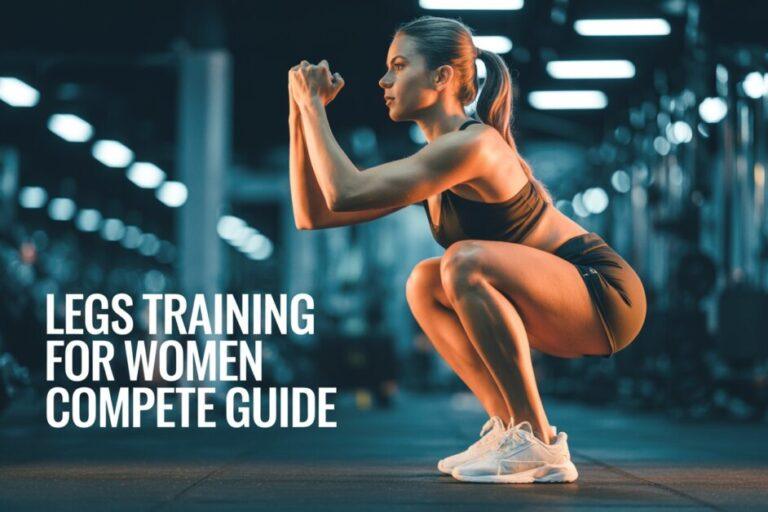How to Train with Your Menstrual Cycle

For too long, the menstrual cycle has been a taboo subject, especially in the realm of sports and fitness. However, understanding and adapting your training to align with the hormonal fluctuations of your cycle can unlock significant performance gains, reduce injury risk, and improve overall well-being. This article delves into the science behind cycle syncing, providing practical strategies and insights to help you optimize your training regimen.
Understanding the Menstrual Cycle
https://journals.sagepub.com/home/ajs
The menstrual cycle is a complex and dynamic process, typically lasting between 21 and 35 days, with an average of 28 days. It’s governed by the interplay of several key hormones, primarily estrogen and progesterone, which fluctuate throughout the cycle, influencing various physiological functions, including energy levels, muscle recovery, and mood.
The Four Phases of the Menstrual Cycle
The menstrual cycle is generally divided into four distinct phases:
- Menstrual Phase (Days 1-5): This is when menstruation occurs, marked by the shedding of the uterine lining. Estrogen and progesterone levels are at their lowest.
- Follicular Phase (Days 6-14): Estrogen levels gradually rise, stimulating the growth of the uterine lining and preparing the body for ovulation.
- Ovulatory Phase (Around Day 14): Estrogen peaks, triggering the release of an egg from the ovary. This is the most fertile time of the cycle.
- Luteal Phase (Days 15-28): Progesterone levels rise, further thickening the uterine lining to support a potential pregnancy. If pregnancy doesn’t occur, both estrogen and progesterone levels decline, leading to menstruation.
Why Cycle Syncing Matters for Training
Ignoring the hormonal shifts of your menstrual cycle can lead to suboptimal training outcomes and increased risk of injury. By understanding how these hormones affect your body, you can tailor your training to maximize performance and minimize potential drawbacks.
Hormonal Influences on Performance
Estrogen and progesterone have profound effects on various aspects of athletic performance:
- Estrogen:
- Enhances carbohydrate utilization, providing readily available energy for high-intensity workouts.
- Supports muscle repair and recovery.
- May improve mood and motivation.
- Progesterone:
- Promotes fat utilization, which can be beneficial for endurance activities.
- Can have a catabolic effect on muscle tissue, potentially hindering muscle growth.
- May contribute to fatigue and decreased motivation in some individuals.
Reduced Injury Risk
Studies have shown a correlation between hormonal fluctuations and injury risk, particularly ACL injuries. For example, research suggests that women are more susceptible to ACL injuries during the pre-ovulatory phase (high estrogen) due to increased ligament laxity. By being aware of these vulnerabilities, athletes can implement preventative measures, such as targeted strength training and proprioceptive exercises.
A study published in the American Journal of Sports Medicine found that female athletes were 3-6 times more likely to sustain an ACL injury than male athletes, and hormonal fluctuations were identified as a contributing factor.
Improved Recovery
Understanding your menstrual cycle can also help optimize recovery strategies. During phases with lower estrogen levels (menstrual and late luteal phases), prioritizing rest, nutrition, and stress management becomes even more crucial to support muscle repair and prevent overtraining.
Practical Strategies for Training with Your Cycle
Implementing cycle syncing into your training requires careful planning and attention to your body’s signals. Here’s a phase-by-phase guide to help you tailor your workouts:
Menstrual Phase (Days 1-5): Focus on Rest and Recovery
During menstruation, energy levels are often lower, and you may experience discomfort. This is a time to prioritize rest and recovery. Consider these strategies:
- Reduce Intensity and Volume: Opt for lighter workouts, such as yoga, walking, or gentle swimming.
- Prioritize Rest: Get adequate sleep and allow your body to recover.
- Focus on Nutrition: Consume iron-rich foods to replenish iron lost during menstruation.
- Hydration: Stay well-hydrated to combat fatigue and headaches.
Example: Instead of a high-intensity interval training (HIIT) session, try a restorative yoga class or a leisurely walk in nature.
Follicular Phase (Days 6-14): Embrace High-Intensity Training
As estrogen levels rise, you’ll likely experience increased energy and motivation. This is an ideal time to push yourself with high-intensity workouts.
- Increase Intensity and Volume: Incorporate HIIT, strength training, and challenging cardio sessions.
- Focus on Strength Training: Estrogen supports muscle repair, making this a good time to focus on building strength.
- Carbohydrate Loading: Your body is more efficient at utilizing carbohydrates during this phase, so fuel your workouts accordingly.
Example: Schedule your heaviest lifting sessions and most demanding cardio workouts during this phase.
Ovulatory Phase (Around Day 14): Be Mindful of Injury Risk
Estrogen peaks around ovulation, which can increase ligament laxity and potentially elevate injury risk. Focus on proper form and injury prevention.
- Maintain Intensity, but Focus on Form: Continue with your regular training, but pay close attention to your technique.
- Incorporate Proprioceptive Exercises: Include exercises that improve balance and stability, such as single-leg squats and balance board exercises.
- Warm-up Thoroughly: Ensure your muscles are properly warmed up before each workout.
Example: Reduce the weight slightly during your lifting sessions and focus on controlled movements.
Luteal Phase (Days 15-28): Adjust Training Based on Symptoms
The luteal phase can be the most challenging for some women due to the rise in progesterone, which can lead to fatigue, bloating, and mood swings. Adjust your training based on your individual symptoms.
- Listen to Your Body: Pay attention to your.
Intermittent Fasting and Exercise: A Guide to Maximizing Fat Loss and Muscle Gain




